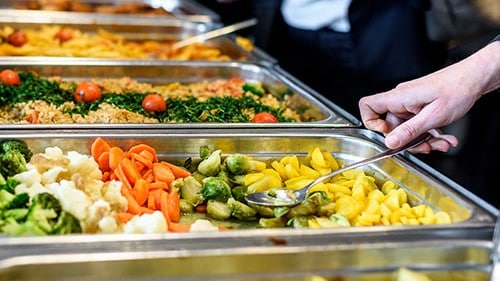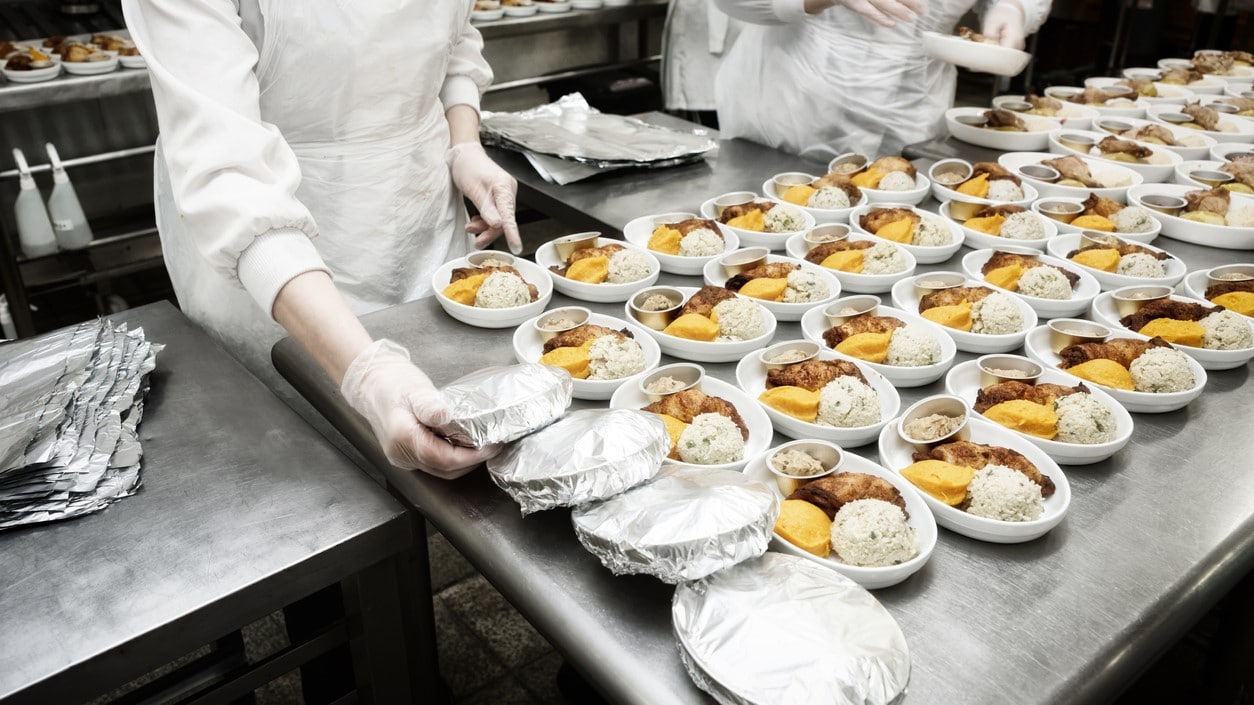At a glance
Using checklists is the simplest way to determine if you are meeting your food service guideline standards. If you want to monitor packaged foods, you will need a list or calculator.

Introduction
Monitoring tracks progress in implementing your food service guidelines initiative. You can track progress by determining what foods and beverages are offered in various food venues. You can also assess whether those foods and beverages meet your standards for food service guidelines. Periodic tracking of the food environment will allow you to see progress in meeting standards over time.
Using checklists
Checklists are the simplest data collection tool to determine whether your food service guidelines are being met. A compliance checklist contains specific food, nutrition, and behavioral design requirements. These can be completed onsite through a relatively quick inspection.
See these checklists for monitoring from the Food Service Guidelines for Federal Facilities.
With minimal training, staff members can use most checklist items. The amount of time and assistance required will depend on the standards you choose to assess.
Standards for the minimal number of fruits or vegetables may be easy to measure. Standards for nutrients or ingredients, such as sodium or trans fats, may be more difficult to assess if the facility does not display nutrition labels. You can ensure that nutrition labeling is included by putting it into contracts. This will help patrons select healthier options and make assessing standards easier.
Some standards specify that certain foods are available during a season or are available on a regular basis. For example, fresh fruits and vegetables may be required when they are in season, or fish may be required twice per week. In these cases, reviewing the menu rotation schedules or consulting with staff may be needed.
In some cases, food service managers can complete the compliance checks after they are trained. Including this requirement in food service contracts is a good way to ensure long-term sustainability of compliance activities. Occasional training and independent inspections should be conducted to ensure data quality and consistency across facilities. When this is not possible, worksite wellness committee members may be trained to conduct compliance monitoring.

Considerations for packaged snacks
The food and nutrition standards for packaged snacks in the Food Service Guidelines for Federal Facilities may be difficult to assess. The standard requires 75% of packaged foods include a specific food as the first ingredient and meet requirements for calories, saturated fats, and sugar.
Assessing packaged foods requires careful reading of nutrition facts and ingredient lists, and conducting calculations. This can take time and staff resources and may not be possible with vending machines where the items cannot be accessed without purchasing.
To reduce the time required to assess packaged snacks, you can:
Create or obtain lists of specific packaged products that are already known to meet the standards. For example, Smart Snacks in School products will also meet criteria for the Food Service Guidelines for Federal Facilities.
Use calculators:
- The Food Service Guidelines Calculator for Packaged Snacks and Beverages allows you to determine which products meet the federal food service guidelines.
- This calculator was designed for Smart Snacks in School. Note that it will not permit some foods or beverages that are allowable under Food Service Guidelines for Federal Facilities.
Use signs or symbols to identify foods that meet standards. This can help shorten the time for your assessment. You will need to check periodically to see if the signs are properly assigned to items that meet standards.
Next steps
Return to "Building Blocks"
Use the "Building Blocks of Food Service Guidelines" to navigate to other parts of the Food Service Guidelines Implementation Toolkit.





